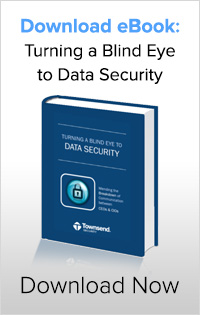It seems like everyday there is a new data breach in the news.
 From malicious hackers to unintentional employee mistakes, loss of sensitive data is skyrocketing. Risk management has brought the data breach issue out of the IT department, and into the offices of Enterprise executives. Data loss is considered such a critical issue that encryption and encryption key management is mandated not only by many industry compliance regulations, but also by most state and governmental laws.
From malicious hackers to unintentional employee mistakes, loss of sensitive data is skyrocketing. Risk management has brought the data breach issue out of the IT department, and into the offices of Enterprise executives. Data loss is considered such a critical issue that encryption and encryption key management is mandated not only by many industry compliance regulations, but also by most state and governmental laws.
Here are a few key thoughts to consider:
5 Misconceptions About Data Security That Put You At Risk
1 If we have a breach, we’ll just pay the fine.
In many cases there will be fines for a data breach, but it is only a small part of the total cost. The cost of a breach also typically includes a forensics investigation, credit monitoring for customers, lost sales due to brand damage, and litigation costs.
2 We’ve never had a problem, so things are probably OK.
This type of thinking is not a form of risk assessment. Since data breaches often take months to discover, you may not know that a breach has already occurred. Wishful thinking won’t help you prevent a breach.
3 My software vendors and consultants say they have everything under control.
Today, many software vendors have not moved quickly enough to add encryption to their core products. It is not wise to rely on vague statements about data security from vendors and consultants. Make sure their solutions have been through a NIST FIPS 140-2 validation, using best practices, and based on industry standards such as AES.
4 My IT staff says we’ve done everything we can.
IT departments may not have the resources or management directives they need to accurately assess and address data security issues. Meeting management’s goals and objectives within a set of operational and budgetary constraints is not the same as meeting security best practices.
5 We are encrypting our data, we are doing everything we should.
If you are encrypting your sensitive data, you’ve already made a good step forward. Do you know how and where your encryption keys are stored? Making sure your keys are not stored with your data is only the first step. Good key management practices will truly protect your data.
5 Steps to Take to Reduce Security Risk
1 Talk About It
Discuss the importance of data security as it relates to risk management with all members of the organization’s leadership team. Data security is an ongoing process that involves every member of the organization, and will extend beyond your organization’s boundaries to vendors and service providers. Responsibility for data security belongs to everyone.
2 Assess Your Current Data Security Posture
If you have not had an external audit and assessment of your organization’s data security practices by a qualified security professional, now is the time to start. First, perform a data security assessment with an in-house consultant, security audit firm, or platform vendor to evaluate your current security posture. Find the location of all sensitive data. Lastly, evaluate the security of your backup tapes. The right security assessor will help you identify the most urgent problems, and help you prioritize your efforts.
3 Invest in Encryption and Key Management
When you have located sensitive data that is not encrypted, start a project to encrypt it now. Don’t forget to invest in the necessary encryption key management devices to protect the encryption keys. If your risk assessment warrants, provide budgetary exceptions to address the problem. Invest where you need to, as soon as you can. When choosing an encryption and key management solution make sure it uses industry standard NIST compliant encryption and FIPS 140-2 compliant key management.
4 Strengthen your technology acquisition processes
Every organization relies on off-the-shelf software solutions to manage and run their business operations. If your core applications do not provide encryption and key management to protect data, put your vendors on notice that they must address this issue immediately, and ask for updates. All new technology acquisitions should incorporate data security requirements into the RFP process.
5 Create ongoing review processes and procedural controls
Performing one security assessment or passing one compliance audit will not provide the focus and attention needed to protect you from a data breach over time. You must conduct routine vulnerability scans, create new processes, and review points within the organization to ensure that you continue to monitor your security stance. Use good procedural controls to minimize the chances of fraud. Implement Dual Control and Separation of Duties to achieve a defensible data security stance.
To learn more, download the eBook, "Turning a Blind Eye to Data Security: Mending the Breakdown of Communication Between CEOs and CIOs", and authors Kevin Beaver, CISSP, Patrick Townsend, and Todd Ostrander will teach you about:
- Business risks associated with unprotected sensitive data
- Tools and resources to begin the discussion about data security in your company
- Actionable steps YOU can take

